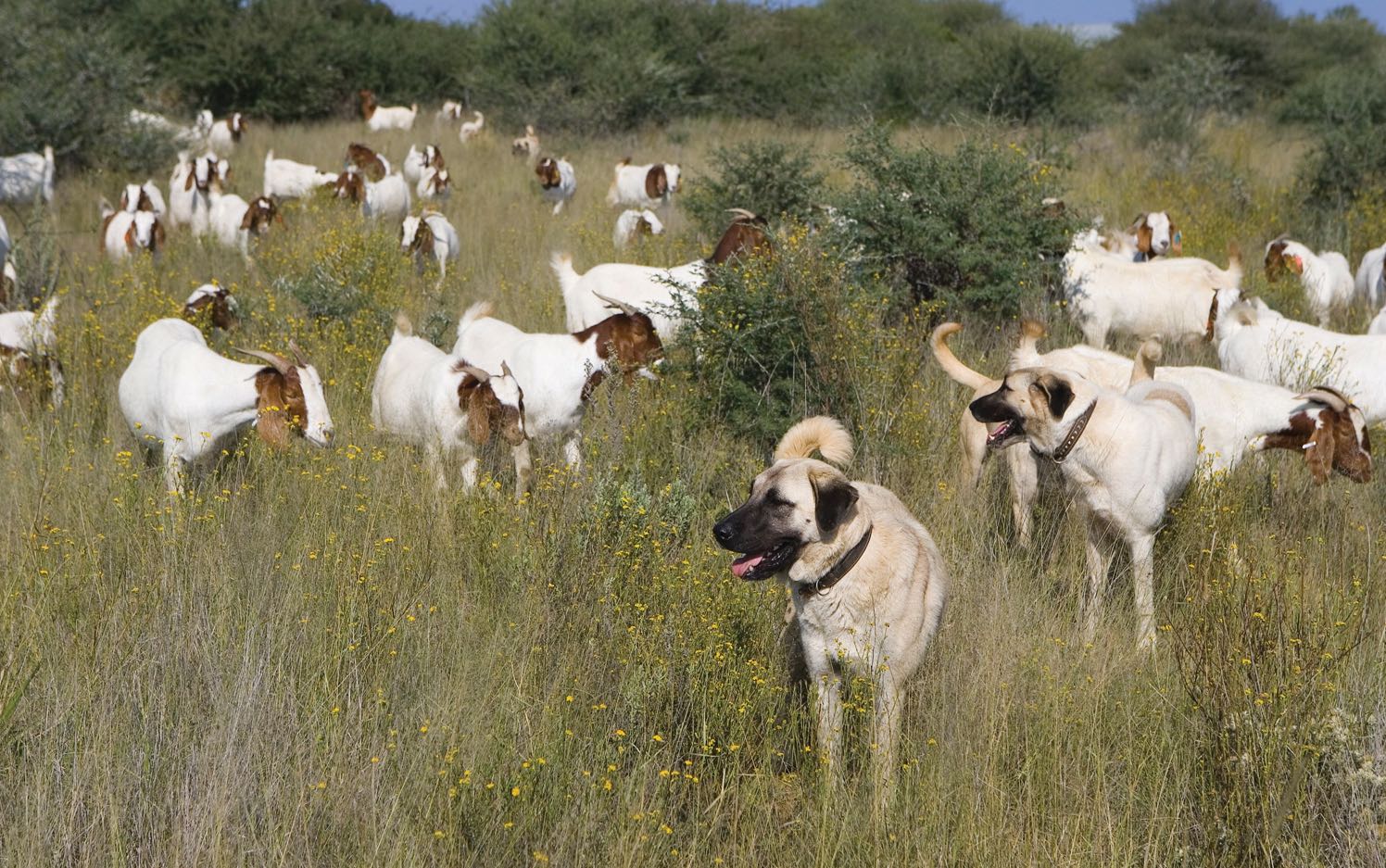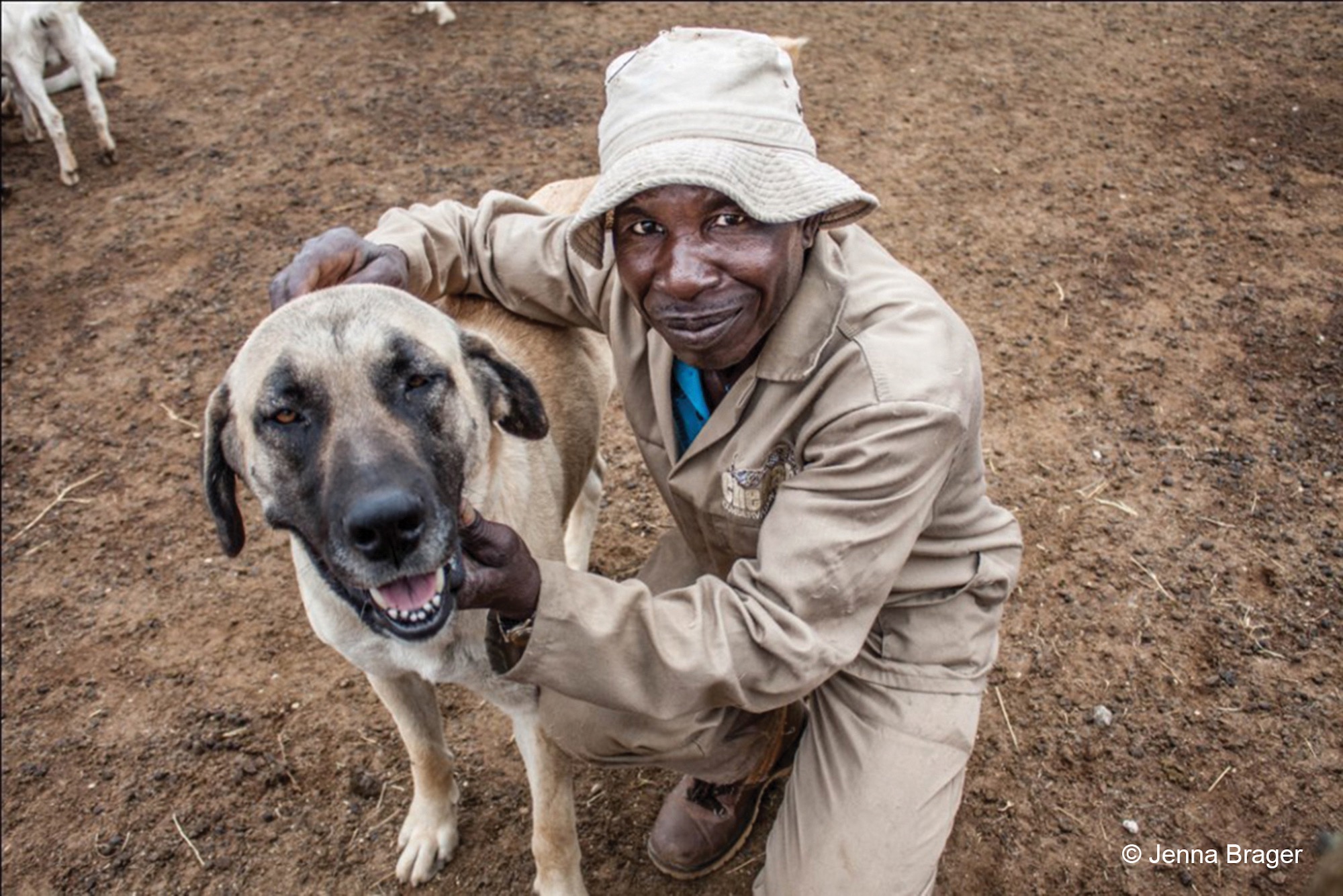
The Year of the CCF Livestock Guarding Dog
By Dr. Laurie Marker
Cheetah Conservation Fund
9th August 2019
In 1994 I embarked on an experiment to determine if livestock guarding dogs, the same kind used in Turkey for more than 5,000 years, could be effective in reducing predation losses for small stock farmers in Namibia. With their imposing presence, fierce bark and loyal, protective nature, livestock guarding dogs provide a buffer between goats and sheep and wildlife sharing farmland habitat. They deter most would-be predators with their bark alone, alleviating pressure on farmers to trap or shoot predators on sight. In Namibia these dogs are credited with saving the lives of hundreds of cheetah and many, many other predator species.
This year our Cheetah Conservation Fund Livestock Guarding Dog (CCF LGD) programme reaches its milestone 25th anniversary. Over the past two-and-a-half decades our organization has bred more than 650 puppies and trained and placed them with Namibian small stock farmers at little or no cost to them. Due to their growing international reputation for being the best protectors of goats and sheep, there is a one to two year wait for those who wish to get a puppy through our programme.


CCF's Livestock Guarding Dog Programme utilizes the Kangal Shepherd Dog, which now includes the Anatolian Shepherd. They are two rare Turkish breeds. I chose these dogs because Turkey has a similar hot and dry climate, the dogs have short coats and they are independent thinkers that do not rely on humans for doing their job.
Our livestock guarding dogs are highly regarded throughout southern Africa for being effective. In Namibia, farmers with CCF dogs report a drop in predation losses ranging between 70 to 100 percent. For communal subsistence farmers the loss of even one animal can be devastating, and guarding dogs therefore provide a valuable service.
In the 1970s and 1980s farmers were removing 700-800 cheetahs a year from the Namibian landscape. They regarded them as pests that have a severe negative impact on livestock farming and the game animal industry. I wrote about this in a research paper, Conservation Strategies for the long-term survival of the Cheetah, published by the Zoological Society of London in 1996. In the article, I highlighted the need to engage with local farmers to save the species:
The survival of the Namibian Cheetah is in the hands of approximately 1,000 farmers and their willingness to integrate Cheetah conservation efforts into farm management.

This was true then, and it is still true today. I would like to thank all Namibian small stock farmers who have agreed to work with CCF and our Livestock Guarding Dogs over the past 25 years, especially the pioneers who were there from the beginning helping us develop the programme. Without them we would not have reached this milestone. Success was achieved through many years of research and development, including scores of interactions. While at first dubious, Namibian farmers embraced the concept and the programme evolved rapidly.
Today, Livestock Guarding Dogs are in great demand in many parts of Africa. CCF has helped launch livestock guarding dog programmes with sister conservation organizations in South Africa (Cheetah Outreach) and in Tanzania (Ruaha Carnivore Project). We are currently assessing how our dogs might be adapted to reduce human-carnivore conflict in Kenya.
Without the CCF staff who work with the dogs the programme would not have become what it is today either. Paige Seitz has been with us for five years as our Livestock Guarding Dog Programme Manager in Namibia. She juggles caring for pregnant mothers and multiple litters with assisting farmers seeking puppy placements. Toivo Tyapa joined us in 2011 as Small Stock Manager. His interactions with our dogs and CCF’s small stock dairy herd inform our Future Farmers of Africa (FFA) training and improve our dogs’ performance. Gebhardt ‘Gebs’ Nikanor has been with CCF since 2001, working with our dogs as our Education and Outreach Officer. Gebs places the dogs on the farms and remains in contact with farmers to check on each dog regularly.

There is one other staff member that deserves credit and gratitude, because without him our Livestock Guarding Dog programme would not be anything like it is today. Most people know very little about him but he, too, has been with CCF a very long time. When we met in 1996 he was a farm worker at Boskop, a farm located 8 km from our CCF Centre. When I discovered that he had his own flock of sheep I gave him one of our first CCF Livestock Guarding Dog puppies to raise. He joined our staff as a herder in 2001 and began working with our dogs.
Flash forward eighteen years. Armas Shaanika is now CCF’s chief goat herder, and he is the best herder in the world! Armas has since raised almost all our puppies. He knows our dogs and goats inside and out. We think of him as our ‘Livestock Guarding Dog Whisperer.’ Although he speaks Oshiwambo only, and I do not, we have developed a very close friendship because we’re conversant in the language of Dogs and Goats.

Farmers testimonials
“The presence of my Livestock Guarding Dog is definitely an advantage. The number of animals I have lost to predators has significantly decreased. Jackals can only be heard in a distance. The bond between the goats and sheep with the dog is a plus point. Because of my Captain I am a happy farmer.”
- Chistiaan Haikali, Received Captain in 2016
"Since I was privileged to receive a CCF Livestock Guarding Dog our livestock’s safety has improved very, very much. Our area has many small livestock predators. Compared to what we used to have, our losses have reduced drastically. Sometimes I would find that a rooikat (caracal) had killed seven sheep in a row without eating one, but this is history since Blackey joined our farming family. The new dog we received last year, Suzy, is learning fast, too. Many thanks to the Cheetah Conservation Fund for their valuable contribution to farmers in Namibia.”
- Edmund Swartz, Received Blackey in 2014 and Suzy in 2018
Armas works with our puppies before we home them. He also works with adult dogs that need to be rehomed, either setting them right or keeping them at Boskop for more training with his own small stock. CCF's herd is made up of Boer goats, Damara sheep and Saanen dairy goats, a total of just over 300 animals. They are with our puppies day and night.
As part of LGD training Armas takes turns bringing the dogs out to the bush with our goat herds during the day. He evaluates young dogs on field work and he assesses whether rehomed dogs are ready to go back to work. Armas’ current favourite dog is an Anatolian shepherd named Silver (like our anniversary!), because she is energetic, alert and listens to his commands.
Without Armas we would not have realized the full potential of our experiment. Thanks to him CCF Livestock Guarding Dogs are the Namibian farmer’s best employee and CCF’s most vital ‘paws on the ground’ partner in cheetah conservation.
Bark out loud for CCF Livestock Guarding Dogs in 2019!
For articles on similar topics, please click one of the following options:








